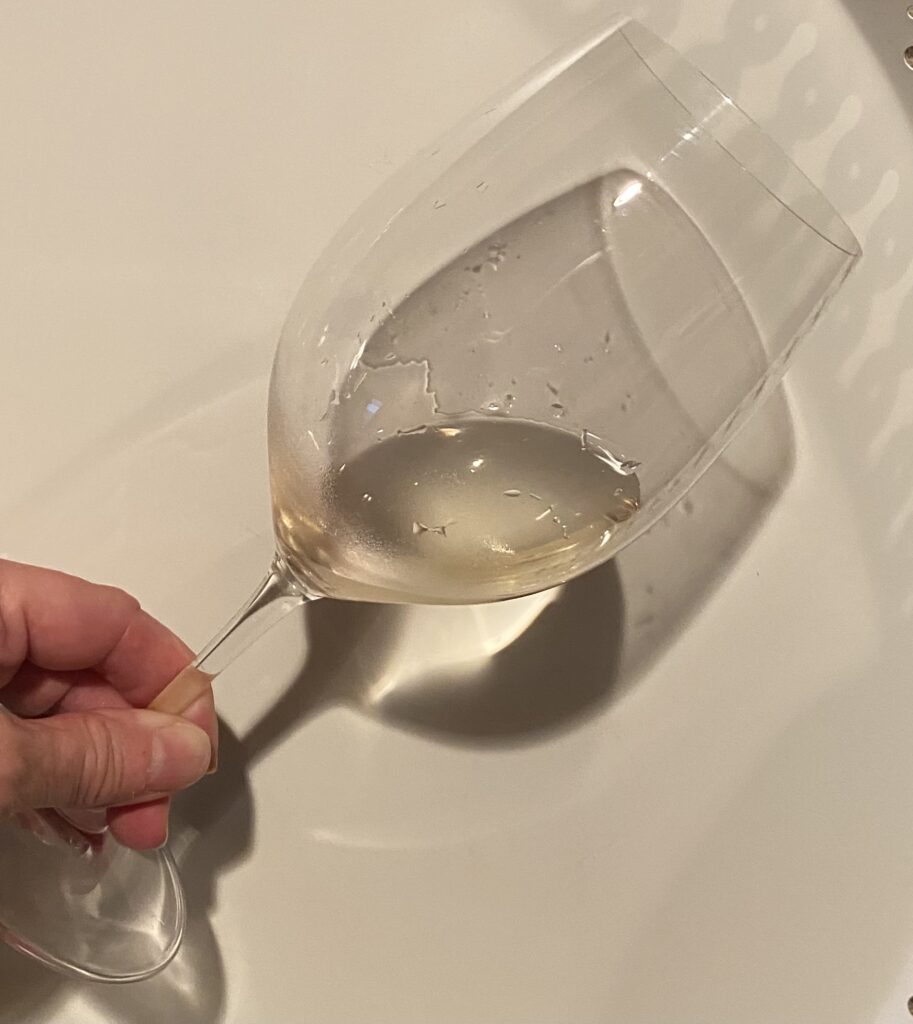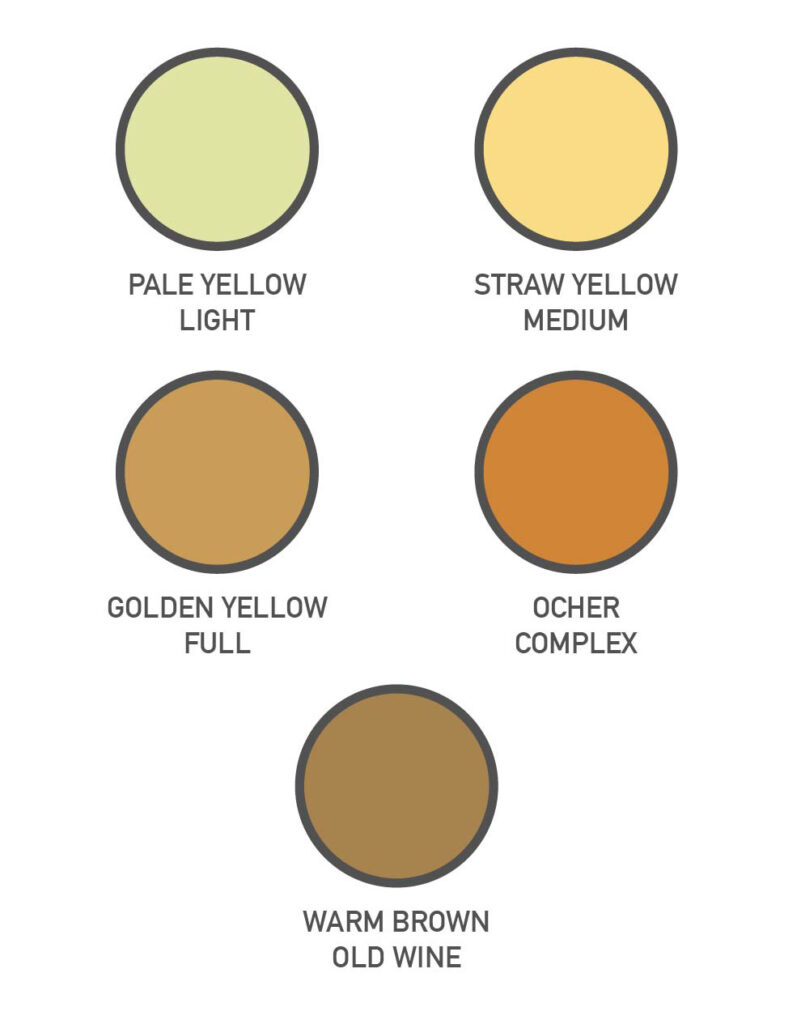Sight
Sight: What you see in a glass of wine can give you clues as to what you can expect when you drink it.

Holding the wine glass by the stem, tilt the wine glass to 45o (or between 1 and 2 o’clock if that is easier to remember!) and look down through the wine to the white background.
- Clarity – hold your glass up to the DOMSOM logo above. If you can clearly see the logo, the wine likely has no faults and was filtered during the wine making process. If there is a slight haze, dirty or cloudy appearance, this can mean the wine was not filtered which can be the case with organic or biodynamic wines. Not being able to see through a white wine due to significant cloudiness can also indicate it was not filtered at all after fermentation or, unfortunately it can mean the wine has gone bad. Check the label for references to unfiltered, organic, or biodynamic.
VIDEO on biodynamic vs organic
- Intensity – again by holding your glass up to a white background or the logo above, you can easily see the wine’s color. Because grape skins are removed before white wines ferment, color comes from the grape’s juice and can change the longer a wine is aged before or after bottling. Young wines are typically pale yellow and can have slight green tints. As white wines age, the color will begin to transition to deeper golden or amber tones. This is caused by oxygen exposure to wine in the barrel (remember, wine barrels do not leak, but they are porous and allow small amounts of oxygen to seep through!) as it is fermented or stored. Deeper saturation of color also can indicate the grapes were harvested when they were very ripe and the juice has higher concentration of flavor, sugar and color.

Pale Medium Deep
Color – white wines range from pale greenish-yellow to deep amber. There is likely a wine to match every single yellow-toned crayon in the biggest crayon box available these days! Typically, wine makers refer to the colors easily reflecting easily identifiable items such as straw, lemons, gold, amber etc… If the color of a wine reminds you of something, it is likely a really good description to use. Color also can help identify whether a wine is relatively young, or from a recent vintage, or older having some time aging in a barrel or bottle. White wines begin to brown with age. As discussed, darker yellow to amber color can indicate contact with oxygen. Deep amber to brown indicates extensive exposure due to age.
